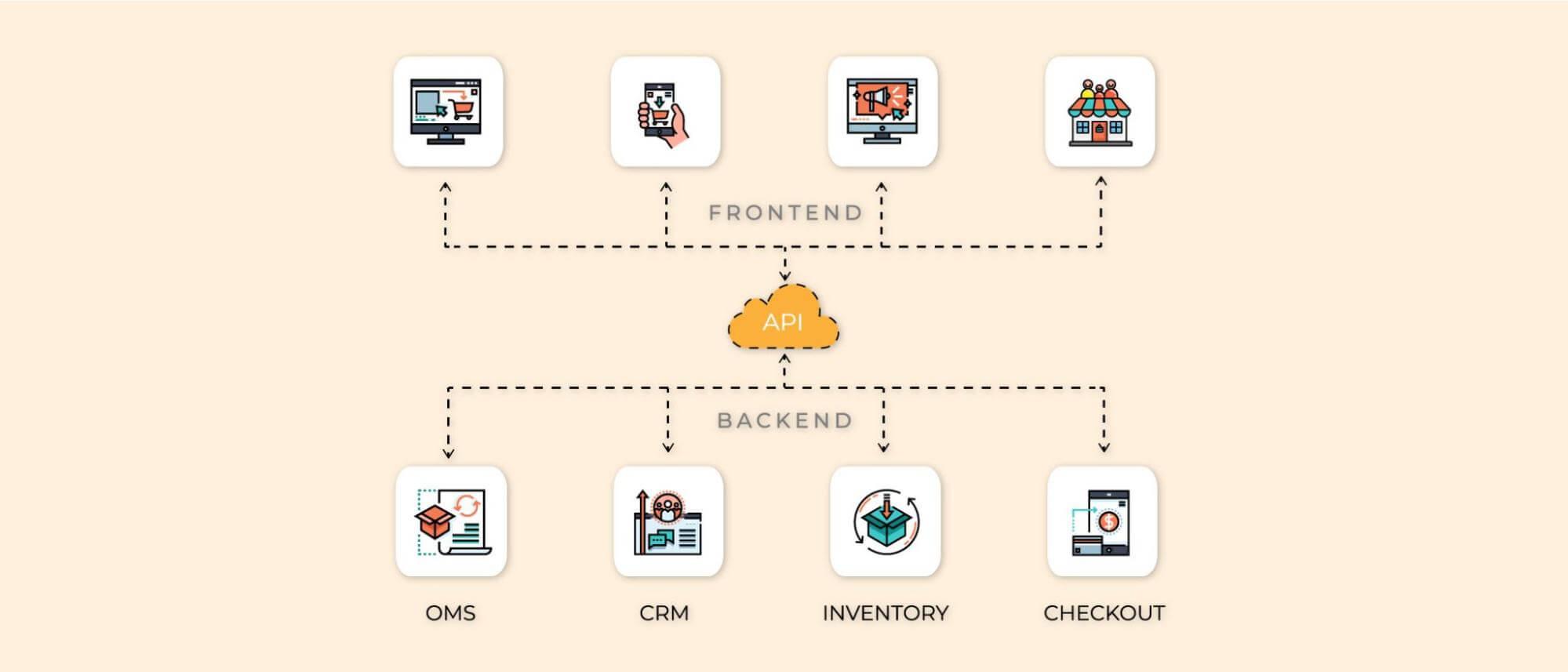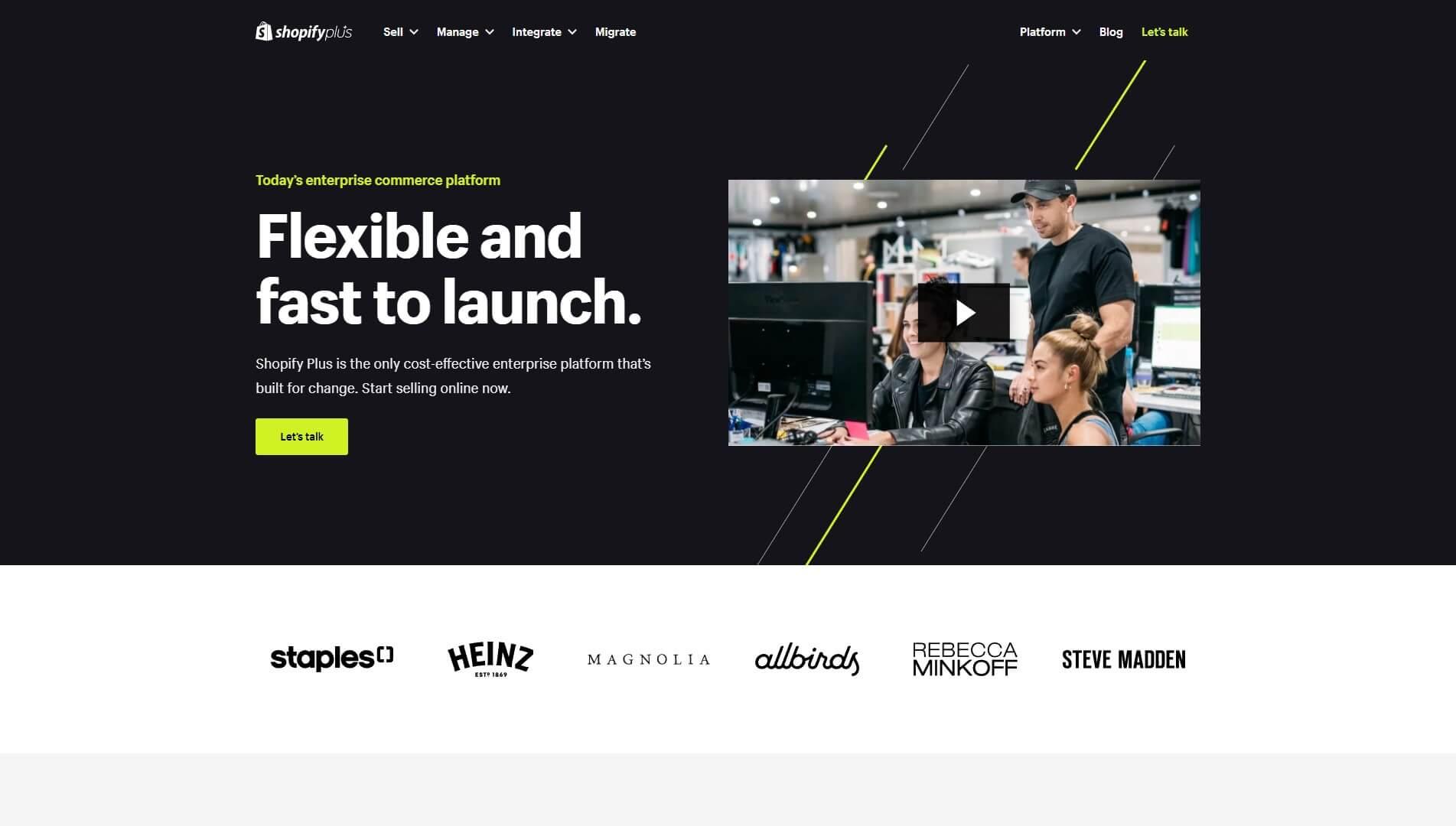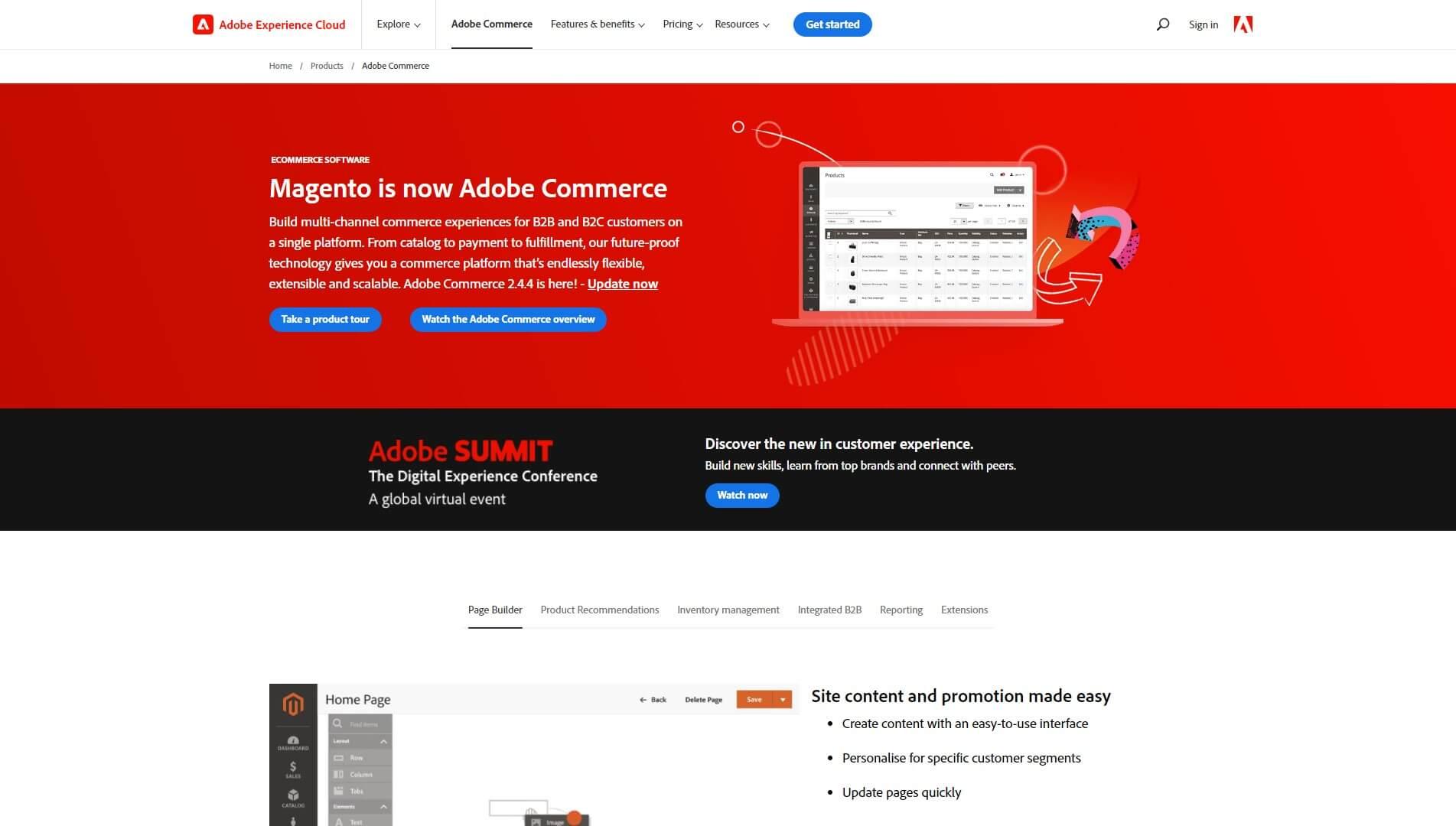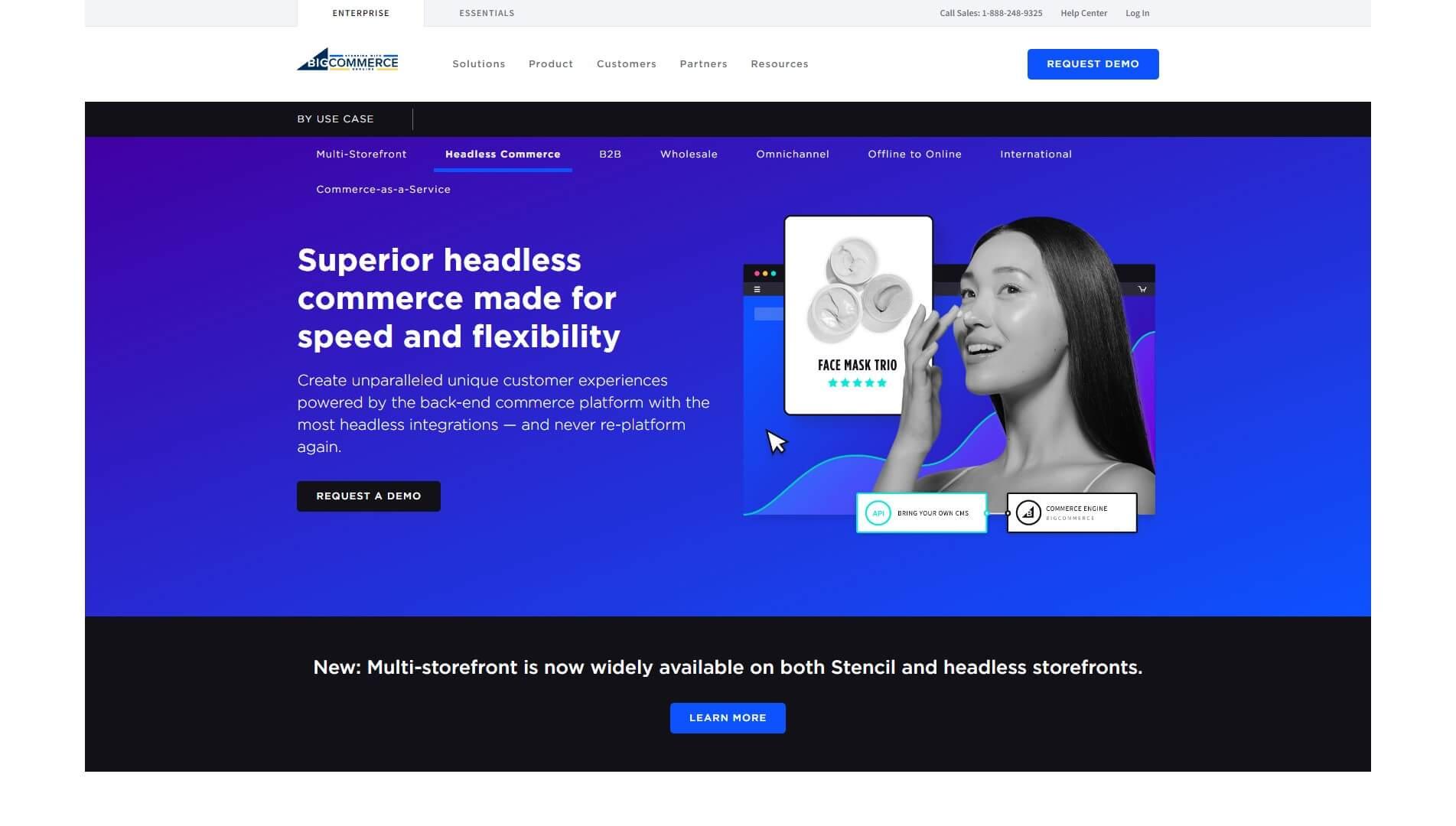Headless Ecommerce Platforms: Definition, Benefits, & Top Choices

A 2013 report by Forrester Consulting was the first to highlight the need for cohesive customer experiences. In the same report, Forrester recommended a solution: loosely coupling the front- and back-end systems to create “headless” ecommerce platforms.
Although headless platforms have come a long way since then, they’ve become a highly debated topic for both developers and merchants.
Many swear by the performance and personalization benefits of headless platforms. But some consider it complex and expensive.
If you’ve been considering a headless approach for your online store, this article will provide you with a definitive answer. We’ll explain everything you need to know about headless ecommerce platforms, including what they are, how they’re different from traditional platforms, their benefits, and the top solutions on the market.
Ready to learn? Let’s get straight to it.
An Introduction to Headless Ecommerce Platforms
The traditional approach to building ecommerce stores prioritized ease of deployment by bundling components such as inventory management, checkout, and design setup into a tightly coupled system, like a monolith.
That has allowed merchants to create a fully functional ecommerce store using a single software package.
Although this approach is easy to use, it can also result in complex dependencies within the software itself. As a result, merchants using monolithic ecommerce systems are unable to keep up with the rising demands for personalized shopping experiences.
Headless ecommerce platforms offer a more modern approach by separating the customer-facing frontend from the data-processing backend. They provide merchants greater design flexibility, faster stores, and better personalization opportunities.
In a headless ecommerce platform, the frontend and backend can use different technologies and communicate through APIs. As a result, there are fewer dependencies between the two ends of the platform, which offers greater scalability.
Moreover, headless ecommerce platforms let you use a single backend system to connect with multiple frontends. That is important because customer touchpoints in the digital world aren’t limited to the browser. They include customers from multiple mediums in order to buy or plan their buying decisions.
For instance, an online business might interact with its customers across several online and offline touchpoints, including:
Website
Mobile app
Social media
Physical store
Using a single backend system with multiple frontends simplifies architecting seamless shopping experiences.
Headless vs. Traditional Ecommerce Platforms: Four Key Differences

Headless ecommerce platforms are radically different from traditional platforms. Here are four crucial differences between traditional and headless ecommerce platforms that you need to know:
Traditional Ecommerce Platform | Headless Ecommerce Platform |
Front- and back-end systems are packaged together. You can’t replace one without replacing the other. | Front- and back-end systems exist independently of each other. You can replace either without breaking your store. |
Design customizations are limited to the technologies supported by the platform. | Unlimited design possibilities. You can connect virtually any frontend technology with your preferred backend system. |
Incurs higher technical debt over the years. Adopting new technologies can be difficult. | Limited to no technical debt. You can adopt new technologies as they emerge. |
Inexpensive to build and deploy. | Expensive to build and run. |
5 Benefits of Using Headless Ecommerce Platforms
Here are the top five benefits of using headless ecommerce platforms.
1. Design Freedom
Headless ecommerce platforms use APIs to connect the frontend with the backend enabling you to use any technology you desire. Thus, you can adopt new technologies as they emerge and offer customers cutting-edge shopping experiences.
2. Omnichannel Retail
Harvard Business Review’s survey of over 46,000 revealed that 73% of consumers use multiple channels to shop. Headless ecommerce platforms allow you to integrate with every channel your customers are on for a seamless customer experience.
3. Personalization
An online survey by Epsilon found that 90% of consumers find personalization appealing, and 80% say personalization increases the chances of doing business with a brand. Headless platforms allow you to offer personalized shopping experiences by integrating the ecommerce backend with a dynamic frontend.
4. Better Performance
Headless ecommerce platforms can achieve page load speeds of 1-2 seconds and below. Although monolithic ecommerce platforms can offer similar performance, headless platforms can do it while processing hundreds or thousands of orders per hour.
That’s one of the reasons why Amazon, one of the most successful ecommerce businesses, uses a microservices-based headless ecommerce architecture.
5. Competitive Advantage
The ability of headless platforms to adapt to emerging technologies is unmatched. Thus, switching to a headless approach allows you to future-proof your online store and stay ahead of your competition.
Best Headless Ecommerce Platforms
There are several headless ecommerce solutions on the market today. We’ve chosen the following platforms as our top three choices for one reason — they’re hybrid.
That means you can start using them even without adopting a headless-first approach. And when you’re ready to switch, you can do it easily.
Shopify Plus

Shopify Plus is our top choice for a headless ecommerce platform for two reasons:
Its powerful, GraphQL-based Storefront API
You can migrate to Shopify and start leveraging the benefits of its managed-for-you backend ecommerce system instantly. Moreover, you can connect it to a React-based frontend like Hydrogen using their Storefront API or use a custom solution as well.
Magento 2/Adobe Commerce

Magento 2 is one of the most powerful ecommerce platforms on the market. With an API built into its core, Magento 2 is an open source headless ecommerce platform that can integrate with some of the best frontend technologies on the market.
Besides the open-source version, Magento 2 is also available as a SaaS solution called Adobe Commerce which eliminates the hassles of server optimization and management. With a resourceful company behind the platform, count on continuous Magento improvements. Thus, Magento 2 is ideal for building a headless storefront for varying business needs.
BigCommerce

BigCommerce is a decent headless ecommerce platform for B2B businesses. It supports various frontend frameworks like Next.js and Gatsby.js and offers an open API architecture with REST and GraphQL endpoints which is ideal for building a headless storefront.
Headless Commerce Is The Future
So, what’s next? We’ve outlined the major differences between traditional and headless ecommerce, five benefits and the top choices for headless platforms. Here’s the verdict.
Headless commerce is here to stay, but the truth is that it’s not for everyone. When you’re choosing a headless ecommerce platform, you need to conduct a cost-benefit analysis of the implementation before you decide.
Implementing a headless storefront can be a significant capital investment. But it pays off in the long term. The flexibility of choosing your frontend design technology and performance benefits alone will help you stay a step ahead of your competition for years to come.
Don’t know if a headless storefront is the right choice for your online business? Contact us now and let’s figure things out. If headless is right for you, we’ll help you migrate to a shiny, new headless storefront with minimal downtime.
